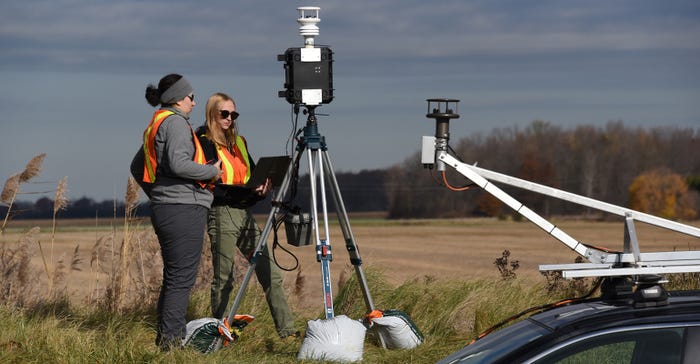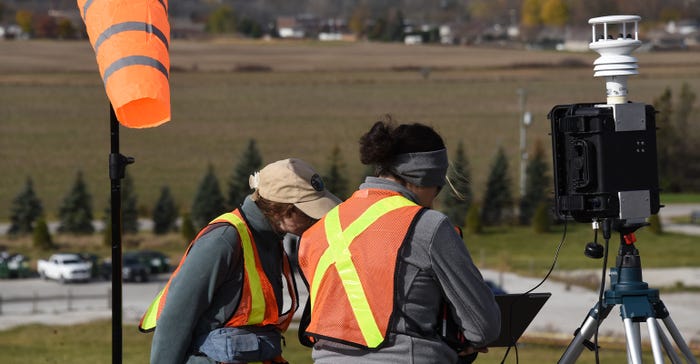GWMS 2024: David Risk Puts Methane Measurement to the Test with Controlled Experiments
David Risk, Professor at Brian Mulroney Institute of Government Research Chair at Saint Francis Xavier University, is leading a GWMS session with an interesting experiment looking at methane emissions. Risk’s presentation “A Controlled Release Experiment for Investigating Methane Measurement Performance at Landfills” looks at an experiment his team built to see if vendors could measure methane.

In a few short weeks, 2024’s Global Waste Management Symposium (GWMS) will be here for a few days of networking, presentations, and of course some time on the links. GWMS is a bi-annual event held in the heart of Indian Wells, Calif. and serves as North America’s top technical conference for research and case studies on waste management.
To prepare for the event, Waste360 checked in with one of GWMS’ speakers on a hot topic from the waste world. David Risk, Professor at Brian Mulroney Institute of Government Research Chair at Saint Francis Xavier University, is leading a session with an interesting experiment looking at methane emissions. Risk’s presentation “A Controlled Release Experiment for Investigating Methane Measurement Performance at Landfills” looks at an experiment his team built to see if vendors could measure methane.
“Everybody needs data on emissions these days. For landfill operators and regulators, there are a whole variety of techniques out there that they can use, and not a lot of them are well validated. And so, we built an experiment and invited vendors to come and see if they could measure methane that we were emitting on purpose,” said Risk.
Risk and his team challenge landfill tool vendor’s and their equipment to see if those tools are working and why it’s important that they do. In a way, it’s like The Amazing Race for methane emissions. The methane is released on purpose and then the game is on to use industry tools to successfully measure those emissions accurately and effectively. Risk is excited to go over the process and results at GWMS as it’s an important test for landfills to know that the tools they are using are getting the job done.
“There's increasing pressure from several angles to measure. First of all, publicly traded companies are being pressured by investors and by the Securities Commissions to report on emissions. And to date, most of them have just been estimating emissions and we know that those estimates can be a little wonky,” said Risk.
“So, there's this increasing pressure. It's important to make measurements better.”

Risk points out that regulators are starting to introduce requirements to measure oil and gas and those requirements will likely extend to landfill operators at some point in the future.
“Managing emissions is really important and so, everybody wants to agree on the right measurement techniques to use because the operators need to know that what the regulators are recommending will deliver a good, truthful result,” Risk continued.
Through his own findings and research, Risk says that creating efficiencies with landfill gas measurements boils down to finding the right tools for the specific jobs. While that may seem obvious, Risk explains that often operators are trying to solve different questions when trying to figure out the total emission rate for a site.
“You're trying to inform your inventory or you're reporting measurements or something like that or make your stakeholders happy, shareholders happy and for detection and localization kind of work, where you're looking actually to find the source of problems which might be problems that you want to fix even before you do a total emissions measurement,” said Risk.
“Ideally, you want to keep that down. And landfills, you know, they’re dynamic, they settle and develop tears in the covers of some of the infrastructure, gas collection infrastructure can leak. So, landfill operators are always trying to keep tabs on that and fix leaks as they occur, and repair covers. I think one of the biggest gaps right now is just matching technology.”

Another important factor that Risk mentioned is cost, and not spending too much money. So, while an academic study can kind of get lost in the cost of materials for an experiment, operators need to be cost conscious. Especially when operators need to apply materials repeatedly to find a resolution for a particular issue.
Oil and gas have established sites for similar testing and have been running experiments for several years. Risk says that he would like to thank EREF and other funders for wanting to create other opportunities, including similar work and science in the landfill sector.
“I think that helps cut through some of the noise and helps everybody spend their money more wisely and report better. When we have data, it’s also easier to be objective and not to rest on our opinions. So, I think that EREF has done a great job there and I hope this kind of work continues,” said Risk.
You can hear David Risk speak during his topic, “A Controlled Release Experiment for Investigating Methane Measurement Performance at Landfills” at GWMS 2024, Feb 25-28.
About the Author
You May Also Like




.png?width=300&auto=webp&quality=80&disable=upscale)